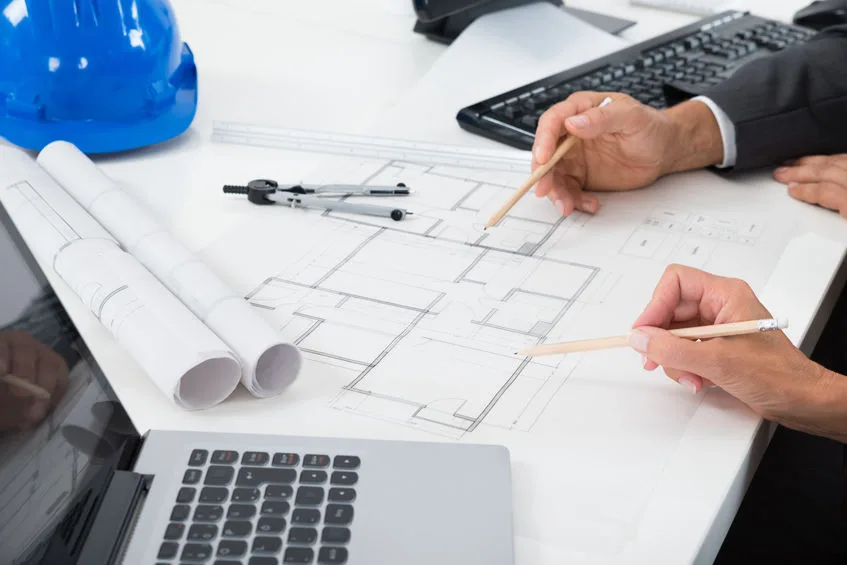Architect-Approved Home Remodeling Ideas
Architect-Approved Home Remodeling Ideas
Blog Article
Recognizing the Diverse Career Paths Available for Aspiring Architect
As an ambitious Architect, you have a globe of profession paths waiting on you. Each course provides special obstacles and possibilities to use your creativity and technical know-how. Whether you're attracted to typical style or the nuances of sustainable layout, there's a specific niche that lines up with your passions. Understanding these varied choices can shape your expert trip, but which instructions will you select to check out initially?
Traditional Architecture: Designing Buildings and Structures
Standard style focuses on developing structures and frameworks that blend performance with aesthetic appeal. Your designs can show cultural heritage, showcasing local customs while fulfilling modern demands.
You'll create skills in preparing, model-making, and website analysis, enabling you to envision and connect your concepts successfully. Engaging with clients, you'll require to comprehend their vision and equate it into viable styles.
Additionally, developing codes and sustainability methods are important in your job, guaranteeing your frameworks are environmentally pleasant and secure. As you expand in your career, you'll locate chances in residential, industrial, and even remediation jobs, each offering unique obstacles. Accepting typical style leads the way for a satisfying profession that pays tribute to the past while forming the future.
Urban Preparation: Forming Communities and Public Spaces
As an aspiring Architect, you can play a necessary function as an urban organizer, transforming just how neighborhoods work and interact. By using neighborhood engagement approaches, you'll guarantee that residents have a voice fit their atmosphere. And also, integrating sustainable layout principles will assist develop areas that not only meet today's needs but also secure the future.
Function of Urban Planners
While numerous might believe of engineers as the single visionaries behind structures, metropolitan coordinators play a crucial role in shaping the more comprehensive landscape of communities and public rooms. They evaluate land usage, zoning legislations, and community requires to create lasting settings that enhance lifestyle. By teaming up with numerous stakeholders, you'll aid create parks, transportation systems, and suburbs that promote social communication and ease of access. Urban organizers likewise concentrate on ecological factors to consider, ensuring that advancements integrate eco-friendly spaces and support biodiversity. Your expertise in spatial style and community characteristics enables you to imagine future development while maintaining social heritage. In this vital function, you'll straight influence how individuals experience their surroundings, making every project a chance for favorable adjustment.
Neighborhood Engagement Approaches
Effective neighborhood engagement techniques are vital for city coordinators to ensure that the voices of citizens are heard and valued in the preparation process. To cultivate purposeful discussion, you ought to prioritize open discussion forums and workshops where area members can reveal their ideas and issues. By proactively paying attention and including feedback, you'll develop spaces that show the neighborhood's demands, inevitably leading to more lasting and effective city environments.
Sustainable Style Principles
When designing metropolitan spaces, integrating lasting style concepts is crucial for producing environments that grow both environmentally and socially. You need to start by concentrating on energy performance, making use of products that lower waste and promote recycling. Think about incorporating eco-friendly rooms, like parks and gardens, to boost biodiversity and improve air top quality. Advertising walkability and public transport can minimize reliance on cars and trucks, cultivating a healthier neighborhood.
Creating with water preservation in mind is likewise crucial-- believe regarding rainfall gardens and permeable surface areas to manage stormwater. Involving neighborhood members during the planning procedure guarantees that the areas you develop fulfill their demands and encourage social communication. By accepting these principles, you'll contribute to lively, sustainable metropolitan landscapes that profit everyone.

Landscape Architecture: Producing Lasting Exterior Environments
As you check out landscape style, you'll uncover essential style principles that create useful and lovely outside rooms. Lasting methods play an essential role in making sure these atmospheres flourish while decreasing ecological impact. Plus, you'll discover a selection of occupation opportunities that permit you to make a real difference in how people connect with nature.
Style Concepts in Landscape
Comprehending layout concepts in landscape architecture is vital for developing sustainable outside settings that harmonize with nature. You'll need to contemplate elements like percentage, scale, and balance to ensure your designs feel natural and welcoming. Including native plants not only boosts biodiversity yet additionally decreases water use, making your landscape durable. Consider the circulation of area and how people communicate with it; pathways and seating locations must welcome exploration and leisure. Additionally, take note of seasonal changes, developing with products that match the environments year-round (Architect). By focusing on sustainability and aesthetic appeals, you can develop outdoor areas that enhance the neighborhood and advertise wellness. Welcoming these concepts will set a strong foundation for your career in landscape style.
Lasting Practices Overview
Lasting practices in landscape architecture not just concentrate on appearances yet likewise focus on eco-friendly wellness and source conservation. By integrating indigenous plants, you improve biodiversity and decrease the demand for chemical fertilizers and chemicals. Applying effective irrigation systems assists preserve water and lessens runoff, shielding nearby ecological communities. You can develop areas that advertise soil health and wellness, such as practicing and using natural materials permaculture concepts. Furthermore, including environment-friendly facilities, like rainfall gardens and permeable pavements, aids in stormwater management and minimizes urban warm. You add to a healthier world and give spaces that promote area connection when you produce exterior environments with sustainability in mind. Inevitably, these methods guarantee your layouts benefit both individuals and the atmosphere for many years ahead.
Occupation Opportunities Exploration
With a strong structure in lasting techniques, landscape style uses a variety of career courses that enable you to make a significant impact on the setting. Urban coordinators frequently team up with landscape engineers to produce green rooms in urban setups, enhancing city livability. If you're enthusiastic regarding education, think about becoming a landscape style educator, motivating future generations.
Lasting Design: Concentrating on Eco-Friendly Practices
As you discover your profession in style, accepting environment-friendly practices can establish you apart in an affordable field. Lasting design concentrates on creating buildings that reduce environmental effect while boosting occupant wellness. By including sustainable products, energy-efficient systems, and sustainable building strategies, you'll add to a greener future.
Begin by acquiring expertise of eco-friendly qualifications like LEED or BREEAM, which can bolster your credentials. Take into consideration exactly how all-natural light, ventilation, and thermal efficiency can enhance style. Team up with engineers and environmental experts to introduce solutions that decrease waste and save resources.
Don't forget the value of area participation-- engaging regional stakeholders can motivate designs that integrate with the environment. As clients significantly prioritize sustainability, your experience in environmentally friendly techniques will not just attract projects but also accomplish your interest for liable style. Welcome this critical facet of the profession, and view your profession thrive.
Historic Conservation: Shielding and Restoring Cultural Heritage
While you start on your building trip, think about the vital role of historic preservation in maintaining our cultural heritage. This area concentrates on the protection and restoration of substantial structures, sites, and frameworks that inform the tales of our past. By participating in historic conservation, you'll assist protect the architectural legacy that forms neighborhood identity.
As a historic conservation Architect, you'll analyze historic significance and analyze the condition of structures. You'll function closely with preservationists and historians to guarantee authentic restoration methods are used. This occupation course enables you to blend imagination with research, enabling you to make options that appreciate original materials and craftsmanship.
Your job not just adds to sustainability by reusing existing structures however additionally cultivates a feeling of satisfaction within communities. Accepting this course will assist you come to be a guardian of background, maintaining the stories and aesthetic over at this website appeals that enrich our lives.
Inside Architecture: Enhancing Indoor Spaces
Historical conservation and interior style both share a commitment to improving the developed setting, but they concentrate on various facets. While historic preservation highlights keeping his explanation a structure's historic and social value, indoor architecture nos in on maximizing interior rooms for capability and looks.
As an aspiring Architect, you'll locate that indoor architecture allows you to blend creative thinking with technological abilities. You'll make spaces that not only look good but additionally promote comfort and efficiency. This field includes comprehending exactly how light, shade, and products interact within a space, affecting mood and functionality.
You'll deal with numerous tasks, from residential homes to industrial offices, guaranteeing that each atmosphere meets the needs of its owners. By focusing on user experience, you can transform insides right into practical and inspiring spaces, making a significant influence on just how people communicate with their surroundings. Embrace the opportunity to improve interior environments and form the method individuals work and live.
Industrial Style: Combining Capability With Visual Appeals
Commercial style plays a crucial role in developing items that effortlessly blend looks with capability, making certain that what you utilize daily is not just aesthetically enticing yet additionally functional. As a hopeful Architect, you might involve on your own in this field, concentrating on creating everything from furnishings to consumer electronics. Your work involves recognizing individual demands, materials, and making processes, permitting you to produce cutting-edge services that boost daily experiences.
In industrial design, you'll typically work together with online marketers, makers, and engineers, making certain that your layouts are not only attractive yet additionally practical. This profession path offers a vibrant setting where creative thinking satisfies functionality, making it a rewarding choice for architects interested in shaping the products of tomorrow.
Regularly Asked Inquiries
What Educational Accreditations Do I Need to Become an Architect?
To come to be a designer, you'll need an expert degree in style, typically a Bachelor's or Master's. In addition, you'll have to finish a teaching fellowship and pass the Architect Enrollment Evaluation to practice legitimately.
Are There Qualification Demands for Different Building Occupation Paths?
Yes, there're certification needs for different architectural paths. Architect. You'll require to pass examinations, full internships, and sometimes go after specialized training, depending on your selected focus, like landscape design, city layout, or historic conservation
What Software Application Abilities Are Crucial for Designers Today?

How Can I Gain Practical Experience While Examining Style?
You can get sensible experience by interning at building firms, joining layout competitions, offering go to this website for community tasks, or working together with schoolmates on real-world projects. These possibilities improve your abilities and build beneficial links in the industry.
What Task Opportunities Exist Outside Standard Style Firms?
You can explore different job chances outside conventional design companies, like metropolitan planning, interior decoration, landscape style, construction administration, real estate growth, and even duties in sustainability consulting. Each offers special obstacles and rewards.
Whether you're drawn to standard style or the subtleties of sustainable design, there's a particular niche that aligns with your rate of interests.When designing metropolitan rooms, including sustainable design principles is critical for developing environments that prosper both ecologically and socially.As you explore landscape design, you'll find crucial layout principles that create lovely and useful outdoor spaces.Understanding style concepts in landscape style is essential for creating lasting outside settings that balance with nature.In industrial layout, you'll often work together with engineers, makers, and marketing experts, ensuring that your layouts are not only attractive however likewise possible.
Report this page